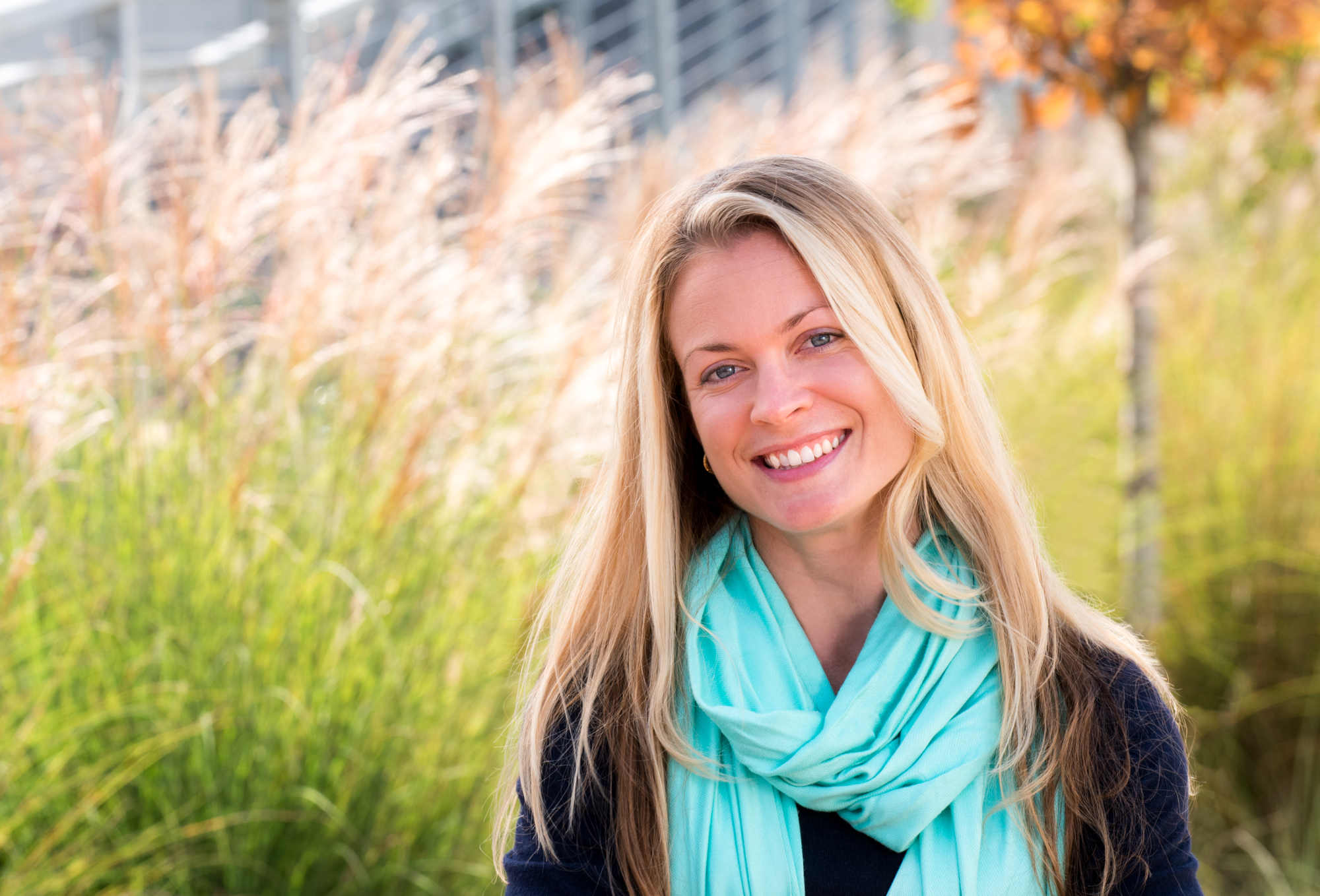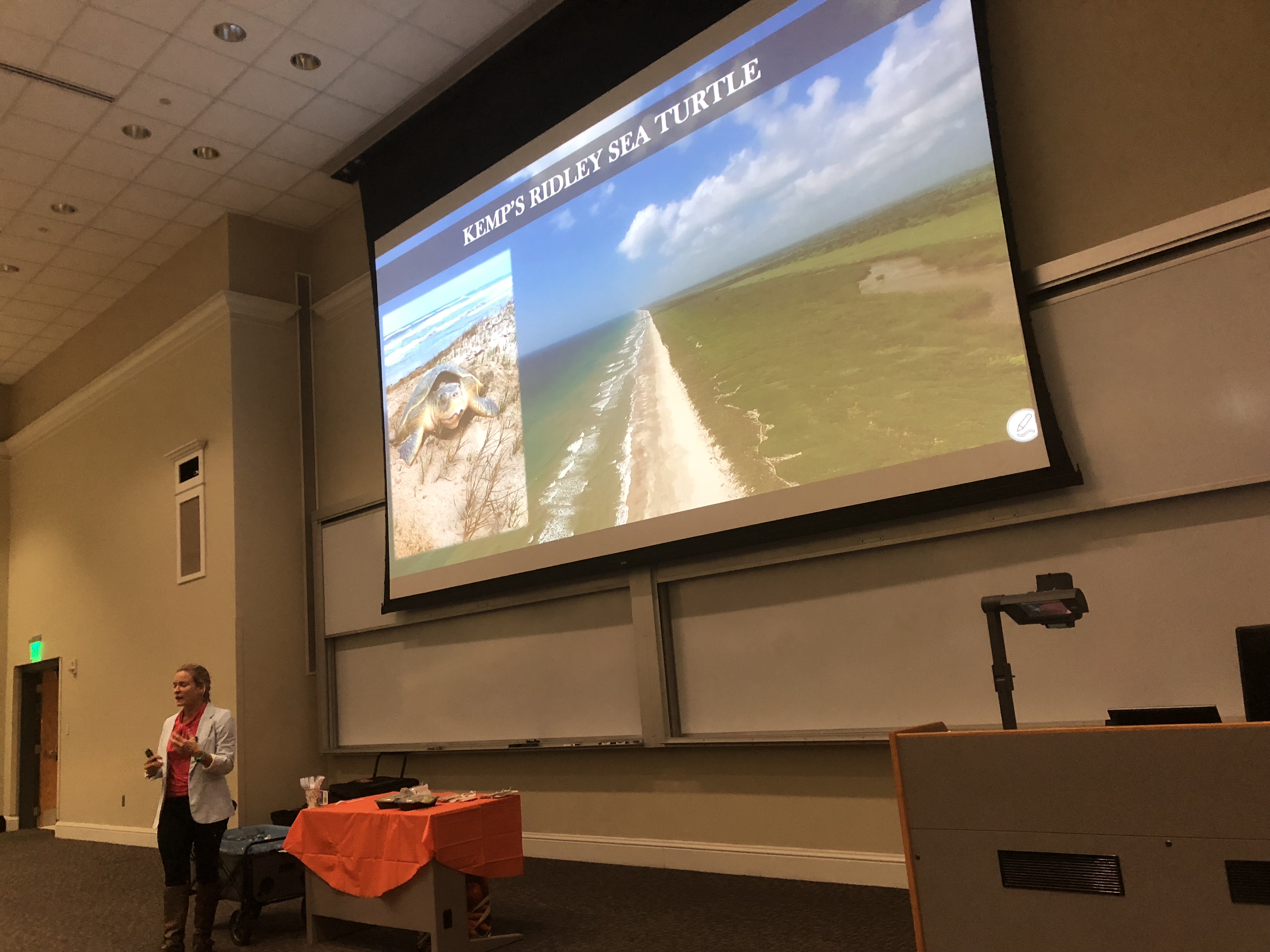COSAM News Articles 2018 December Women of South’s BEST Robotics Championship Learn of Marine Biology Advances During Luncheon
Women of South’s BEST Robotics Championship Learn of Marine Biology Advances During Luncheon
Around lunch time on December 1, around 200 high school girls took a break from the Auburn University-hosted South’s BEST (Boosting Engineering Science and Technology) Robotics Championship to take part in the Women in Science and Engineering Luncheon.
Mary Lou Ewald, director of outreach for the Auburn University College of Sciences and Mathematics (COSAM), brought the South’s BEST Robotics competition to Auburn 16 years ago and said the luncheon celebrates the fact that the BEST competition attracts 40 percent more women than other robotics competitions in the country.
“BEST has done a good job of attracting women to the competition because there is all of these other components, like the marketing presentation and the scene exhibits, other ways for them to tie in and be a big part of it and learn about science and engineering in a different way,” Ewald said.
Each year, the luncheon, which took place in the COSAM Sciences Center Auditorium, hosts a speaker from a science or engineering field. Tying into this year’s BEST Robotics Championship game theme, “Current Events,” which focuses on the use of robots in removing garbage from the oceans, marine biologist Dr. Elizabeth Bevan was the guest speaker.
Dr. Bevan is a postdoctoral researcher in the Department of Earth, Oceans, and Atmospheric Sciences at Florida State University. She has made great strides in the study of sea turtles by using novel unmanned aircraft systems (UAS) technology to study the biology and conservation of endangered sea turtles at in-water habitats. She has studied sea turtles in the Gulf of Mexico, and after earning a National Science Foundation East Asia Pacific Summer Institutes Fellowship in 2016, expanded her studies to Australia, where she also explored the impact of drone disturbance on multiple species.
After completing a one-year National Oceanic and Atmospheric Administration National Sea Grant John Knauss Fellowship in marine policy in Washington, D.C., she continues to broaden her scientific background and application of UAS while at FSU to study the distribution and behavior of sea turtles at foraging habitats off southwest Florida. She is also delving into the finer social science and behavioral aspects of reducing the occurrence of vessel-related sea turtle injuries on the opposite coast of Florida near St. Lucie.
Dr. Bevan has spoken at national and international venues, such as a TEDxBirmingham talk in 2017.
Dr. Jessica Gilpin, postdoctoral fellow in the COSAM Outreach Office at Auburn University, introduced Dr. Bevan at the luncheon.
“This is one of my favorite parts of BEST, especially this year with the Marine Biology theme,” said Dr. Gilpin who has a Ph.D. in Marine Biology. “It was really fun when Tj Nguyen, who made the game this year, told me that his friend Dr. Elizabeth Bevan, who actually works on sea turtles and has done some really cool research with drones, could come speak at this luncheon. I was really excited to help host it.”
Nguyen said as he was developing the game, Dr. Bevan immediately came to mind as an amazing role model for the luncheon because she followed her passion and curiosity into the unknown and found a STEM career she loved.
“She didn’t grow up thinking 'I want to study turtles with drones,'" Nguyen said. “I think students are too conditioned to know exactly what they want to do when they graduate and have an exact plan they need to follow and it sets them up for failure when they hit the inevitable snags along the way. Dr. Bevan is able to show these students that sometimes the best thing to do is to follow your heart and figure out things as you go along.”
During the luncheon, Dr. Bevan spoke to the students about her research and what led her to Marine Biology.
“You may wonder how somebody ends up on this Marine Biology path in the first place. I’ll tell you how,” Dr. Bevan said. “You end up on that path because you’re always true to what it is that excites you in life. For me, it was the ocean.”
Dr. Bevan spoke on how she got her first taste of Marine Biology as a Clover Bud in her local 4-H Club.
“This was my first chance to dive beneath the waves and experience a world so incredibly different than anything that I had seen on land,” she remembered. “I couldn’t help but want to be in it.”
Dr. Bevan related to the students by sharing her time as part of a robotics club in high school.
“This is where I got to really learn the art of trial and error, and more importantly, not losing hope or losing your faith in what you’re building just because it doesn’t work,” she said.
She spoke about how she began working in Marine Biology during undergraduate studies at Florida International University and how her first task was sitting in front of a computer screen counting the flipper strokes of sea turtles. She also spoke on how she became interested in using drones to study sea turtles. While studying nesting habits of the Kemp’s Ridley sea turtle, she became interested in how these turtles spend their time when they’re not at the nesting beach.
“It just so happens that as I was contemplating this far off question, that we also had an increase in the availability of drone technology,” Dr. Bevan said. “We wanted to know, if this is uncharted territory, what can we use it for? It turns out that we didn’t just see sea turtles, we saw differences in species. We could see and detect different species.”
The drone technology also offered the opportunity to see differences in the gender of sea turtles.
“When we saw this, we got really excited because we could monitor what the males do,” she said. “Because for as much information we have for females, we have virtually no information of what males do. Males don’t come up on the beach to lay eggs and give us a chance to slap tags on them and follow them, so it’s really difficult to get information on the males.”
Dr. Bevan’s team began watching behavior specifically associated with forging and mating. When she looked back to see what research has been done on courtship and mating rituals of sea turtles, there had only been five studies done, the latest 40 years ago. Also, all former studies had been done in captivity or with the observer in attendance.
“All of a sudden we realized that we were not only able to find turtles and see mating behaviors, but we were able to document individual behaviors in a detailed, never-before recorded, never-before possible way,” she said. “Drone technology has not only changed the way we look at sea turtles, and the way we study them, but it revolutionized the questions that we can ask now.”
After retracing the steps with the students that led to her current path in marine biology, Dr. Bevan said she has enjoyed the whirlwind of her career.
“When I was putting together this presentation, I thought to myself that this is a really cool path that has unfolded before me,” she said. “But that path is the direct result of opportunities, dedication and, above all, a passion for Marine Biology.”
Latest Headlines
-
04/17/2024
-
04/12/2024
-
04/02/2024
-
04/02/2024
-
04/02/2024



